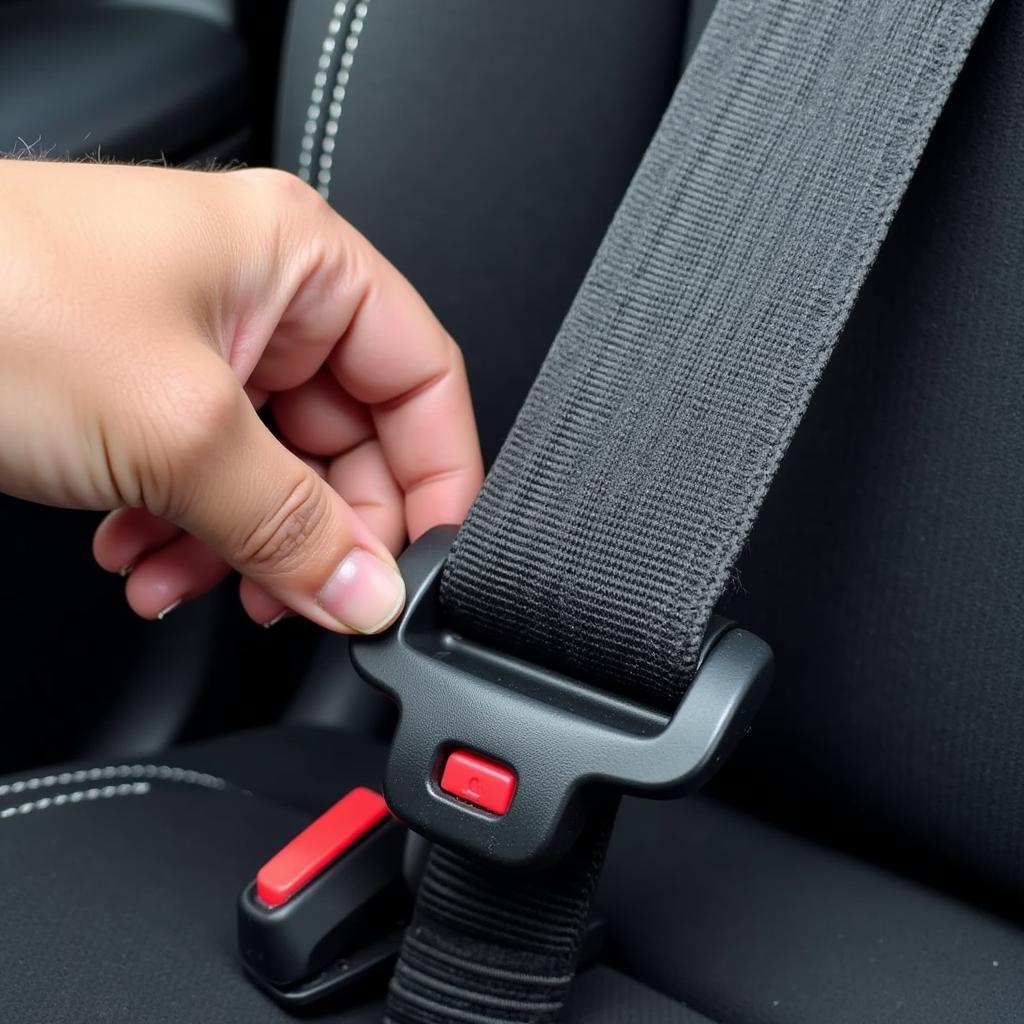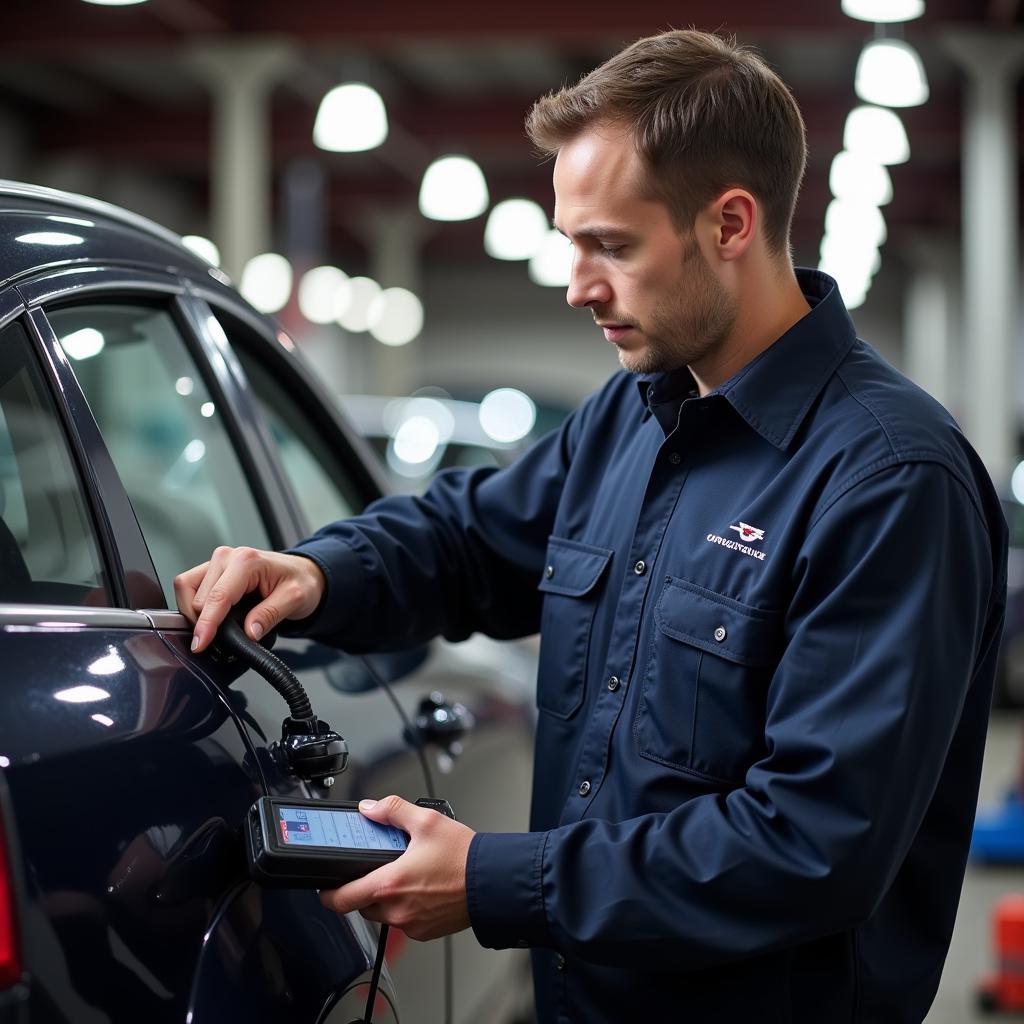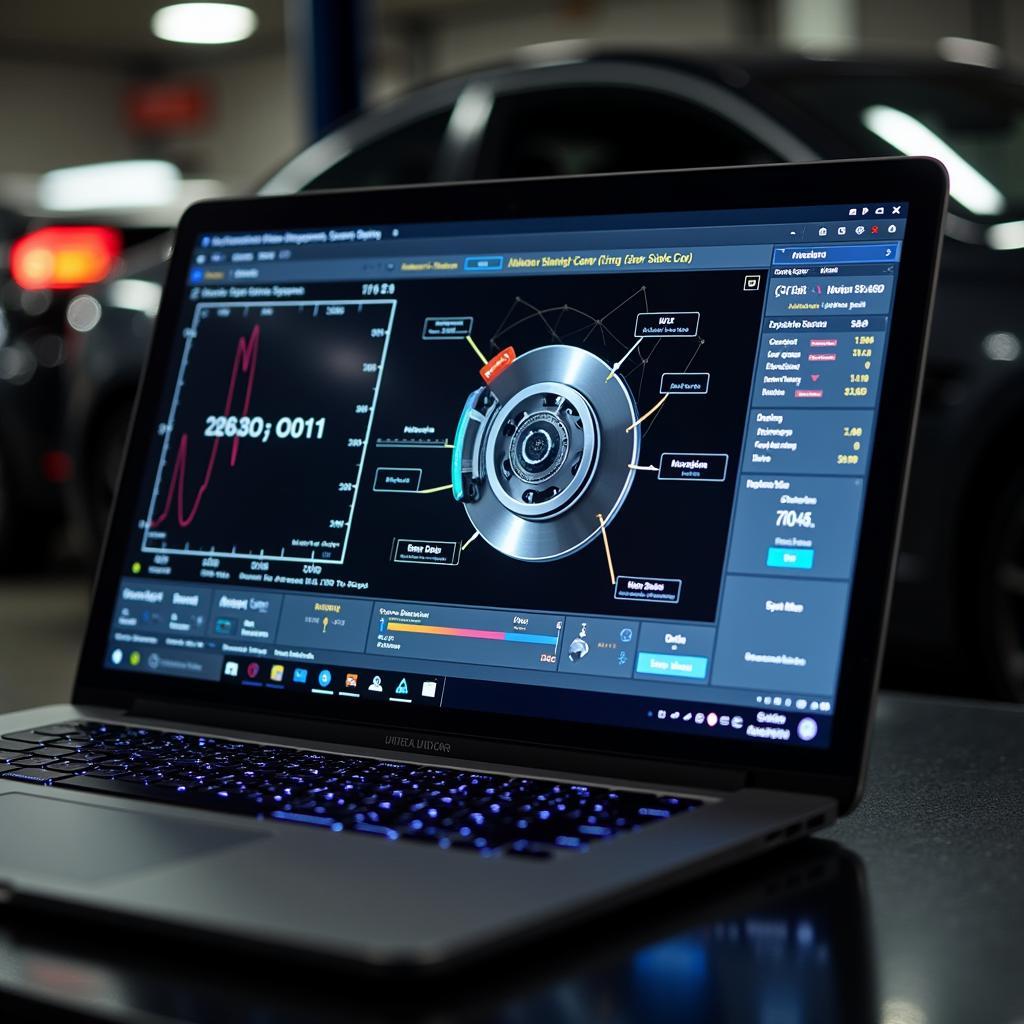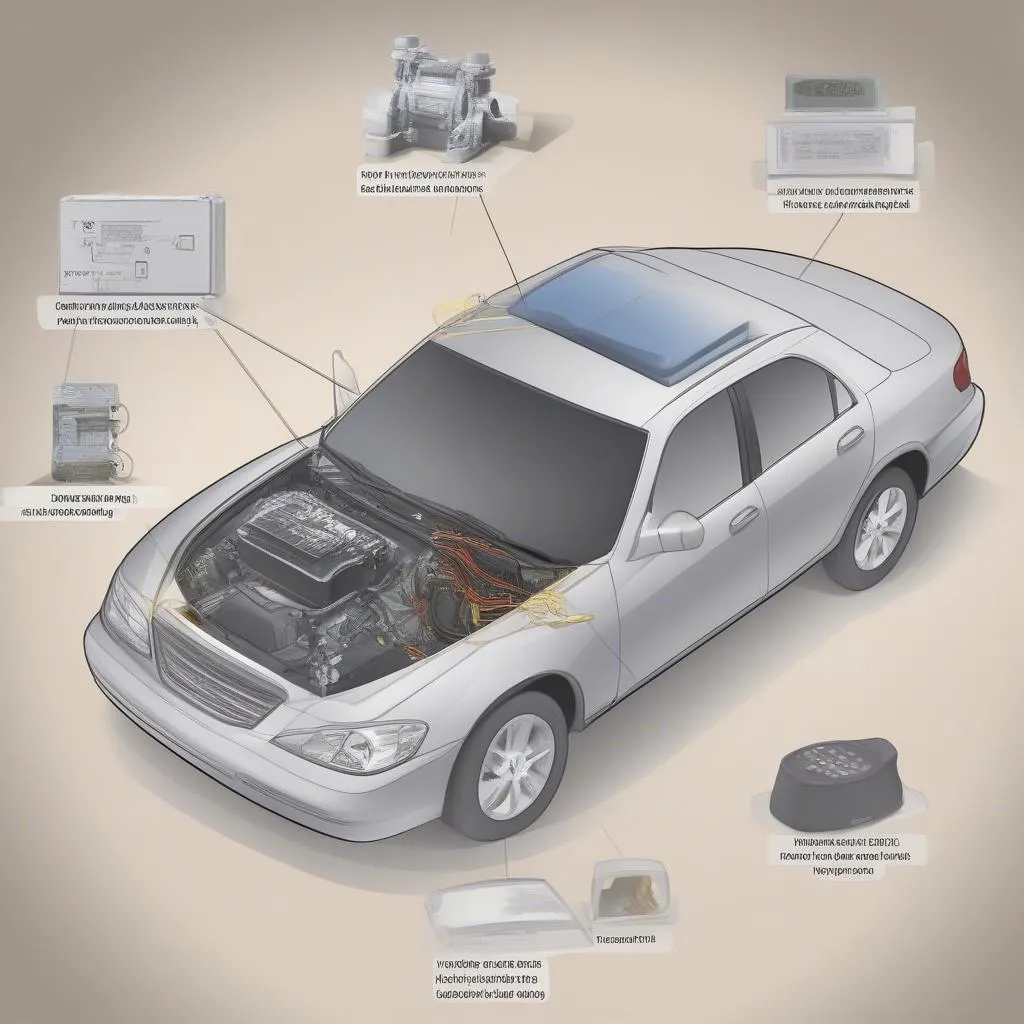You’re driving down the road, and suddenly a message pops up on your dashboard: “View Larger Warning Light Seat Belt.” This message, often accompanied by a chime or a flashing seat belt icon, can be confusing. Is there something wrong with your seat belt? Is it safe to continue driving?
This article will delve into the common causes of the “View Larger Warning Light Seat Belt” message, how to troubleshoot the issue, and when it’s necessary to seek professional help.
What Triggers the “View Larger Warning Light Seat Belt” Message?
Modern vehicles are equipped with sophisticated safety systems designed to protect drivers and passengers. One such system is the Seat Belt Reminder, which utilizes sensors to detect whether the seat belts are fastened. When the system detects an unbuckled seat belt, it triggers the “View Larger Warning Light Seat Belt” message.
Here are the most common triggers:
- Unbuckled Seat Belt: The most obvious reason for the message is an unfastened seat belt. This applies to both the driver and any passengers in the vehicle.
- Faulty Seat Belt Sensor: Like any sensor, the seat belt sensor can malfunction. This could be due to a wiring issue, a broken sensor, or even something as simple as a loose connection.
- Weight on the Passenger Seat: Some vehicles have weight sensors in the passenger seat that activate the seat belt reminder if a certain weight threshold is met. This is a safety feature to ensure that children or smaller adults are properly secured.
- Software Glitch: While less common, a software glitch in the vehicle’s computer system can also trigger a false “View Larger Warning Light Seat Belt” message.
Troubleshooting the “View Larger Warning Light Seat Belt” Message
Before assuming the worst, there are several things you can try to troubleshoot the issue yourself:
- Check Your Seat Belts: The first and most crucial step is to ensure that all occupants have their seat belts securely fastened.
- Inspect the Seat Belt Buckles: Check to make sure there is no debris or foreign objects lodged in the seat belt buckles, preventing a secure connection.
- Restart Your Vehicle: Sometimes, a simple system reset can clear temporary glitches. Turn off your vehicle, wait a few minutes, and restart it to see if the message disappears.
 Inspecting a Seat Belt Buckle
Inspecting a Seat Belt Buckle
When to Seek Professional Help
If the “View Larger Warning Light Seat Belt” message persists despite your best efforts, it’s time to consult a qualified automotive technician. They have the diagnostic tools and expertise to identify and address the root cause of the problem.
Here are some instances where professional help is recommended:
- The Message Persists After Troubleshooting: If the message won’t go away even after trying the basic troubleshooting steps, it indicates a potentially more serious issue.
- You Suspect a Faulty Sensor or Wiring: Diagnosing and repairing electrical components in a vehicle requires specialized knowledge and tools.
- You’re Uncomfortable Troubleshooting Yourself: There’s no shame in seeking professional assistance if you’re not comfortable tinkering with your vehicle’s safety systems.
 Automotive Technician Diagnosing a Car
Automotive Technician Diagnosing a Car
Importance of Addressing the Issue Promptly
Ignoring a persistent “View Larger Warning Light Seat Belt” message is never a good idea. While it might seem like a minor annoyance, it could point to a safety concern that shouldn’t be ignored. Addressing the issue promptly ensures the proper functioning of your vehicle’s safety systems and the well-being of you and your passengers.
Conclusion
The “View Larger Warning Light Seat Belt” message is your vehicle’s way of prioritizing safety. By understanding the common triggers and troubleshooting steps, you can often resolve the issue quickly. However, if the message persists, don’t hesitate to seek professional help. A qualified automotive technician can diagnose and repair the problem, ensuring the continued safety and reliability of your vehicle.


